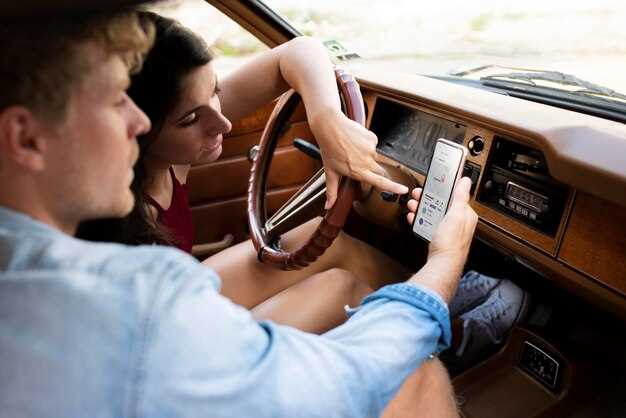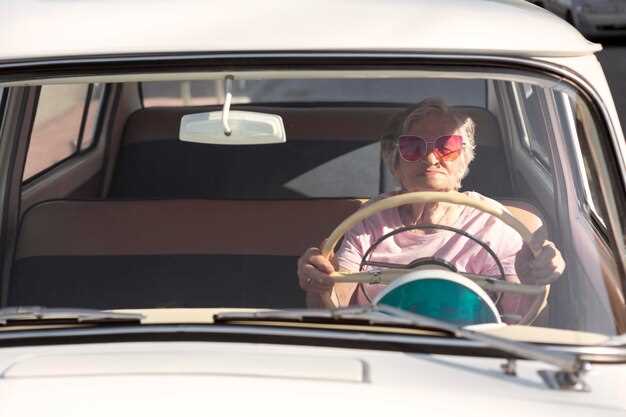
Classic cars possess a unique charm and character that captivates automotive enthusiasts. However, driving these vintage vehicles in today’s fast-paced and congested traffic presents a series of challenges. As modern cars are designed with advanced safety features and performance capabilities, classic car owners must adapt their driving habits to ensure both their safety and the protection of their cherished vehicles.
Understanding the Limitations of classic cars is essential for safe driving in contemporary road conditions. Older models often lack modern braking systems, stability control, and advanced visibility features. Recognizing these limitations allows drivers to adopt a cautious approach, enabling them to navigate traffic more effectively.
Effective communication with other road users is vital. Classic car drivers must employ techniques such as using turn signals well in advance and making eye contact with other drivers to convey intentions. This proactive approach helps to reduce the risk of accidents and enhances the overall driving experience.
Lastly, embracing defensive driving strategies is key to safely operating a classic car in modern traffic. Maintaining a safe distance from other vehicles, being aware of blind spots, and anticipating the actions of other drivers can significantly contribute to a secure journey. By combining awareness of their vehicle’s limitations with proactive driving techniques, classic car enthusiasts can enjoy their passion while staying safe on the roads.
Adapting to Modern Traffic Signals and Signs

Driving classic cars in today’s modern traffic requires a keen awareness of contemporary traffic signals and signs. Many classic vehicles lack advanced technology that assists with navigation and situational awareness. Thus, understanding modern traffic signals is essential for safety.
First, familiarize yourself with the updated meanings of traffic signals. While red, yellow, and green lights remain consistent, the addition of arrow signals can change the way turns are approached. Learning how to interpret these signals correctly will help avoid potential accidents. Furthermore, many intersections now feature countdown timers at pedestrian crossings, providing visual cues on how much time remains to cross safely.
Next, newer road signs include digital displays and variable message boards that convey important information, such as changing speed limits and navigation directions. Classic car drivers should remain alert to these signs, especially in urban environments where traffic patterns can change rapidly. The ability to quickly interpret these messages can significantly enhance driving safety and situational awareness.
Additionally, be aware of new traffic control devices such as roundabouts and bike lanes, which may not have been common during the era when your classic car was manufactured. Roundabouts require a different approach to navigation, prioritizing vehicles within the circle, while bike lanes demand heightened vigilance for cyclists. Adapting to these features will ensure safer integration into modern traffic flows.
Moreover, it’s crucial to understand the implications of new traffic laws affecting drivers. For instance, many jurisdictions have implemented stricter regulations regarding mobile device use while driving. Remaining compliant with these laws not only enhances safety but also helps avoid potential legal issues.
Lastly, consider retrofitting your classic vehicle with modern safety features where possible. Options such as LED lights, updated mirrors, and enhanced visibility add a layer of safety while ensuring you are more visible to other road users. Embracing these adaptations can make a significant difference in a classic car’s performance in modern road environments.
Essential Maintenance Tips for Old Vehicles

Maintaining classic cars requires a unique approach due to their age and the technology of the time they were built. Regular inspections are crucial; checking fluid levels, brakes, and tires should be routine. Ensure that oil and coolant levels are monitored closely, as older vehicles can develop leaks more easily than modern models.
Pay special attention to the battery condition. Classic cars may have electrical systems that are less robust, so using a trickle charger when not in use can help prolong battery life. Additionally, clean the battery terminals regularly to prevent corrosion.
Inspect and replace belts and hoses as needed. Rubber components can degrade over time, leading to potential breakdowns. Look for signs of wear, such as cracks or fraying, and regularly replace them to avoid more significant issues on the road.
Brake systems must be in optimal condition. Regularly test brake pads, rotors, and fluid to ensure responsive braking performance. Old brake fluid can absorb moisture, which compromises braking efficiency, so consider flushing the system periodically.
Tire care is equally important. Check tire pressure regularly and maintain proper inflation to enhance fuel efficiency and handling. Additionally, inspect tread depth and look for any signs of uneven wear, which could signal alignment issues.
Cleaning and protecting bodywork helps prevent rust and decay. Regular washes and applying proper wax can safeguard the paint and metal surfaces. If rust spots are discovered, address them immediately to prevent larger problems down the line.
Finally, consider regular tune-ups and adjustments to the engine. Old engines may require more frequent adjustments to maintain proper ignition timing and fuel mixture. Keeping the carburetor clean and replacing filters will aid in overall engine performance.
Best Practices for Defensive Driving with Vintage Cars
Driving a vintage car requires heightened awareness and attention due to their unique characteristics and limitations. Here are essential practices to enhance your defensive driving skills.
First, maintain a safe following distance. Vintage cars often lack the advanced braking systems found in modern vehicles. Keeping a greater distance from the vehicle ahead allows for better reaction time in case of sudden stops.
Always stay visible. Ensure that your classic car is equipped with functional lights, reflective materials, and proper visibility enhancements. Be mindful of your position on the road and avoid blind spots to ensure other drivers can see you easily.
Anticipate the actions of surrounding vehicles. Understanding that other drivers may not expect to see a vintage car can help you predict their movements. Watch for erratic behavior, and be prepared to adjust your speed or direction accordingly.
Use your mirrors frequently. Vintage cars may have limited visibility, so frequently checking mirrors and blind spots is crucial. This practice will help you remain aware of your surroundings and any potential hazards.
Plan your route carefully. Opt for well-maintained roads with lower speed limits and less traffic congestion to minimize the likelihood of accidents. Avoid high-speed highways where possible since vintage cars may struggle to keep pace.
Stay calm and patient, especially in heavy traffic. Aggressive driving or rushing can lead to dangerous situations. Embrace the slower pace of a classic car and remain focused on driving safely rather than trying to keep up with modern traffic.
Be prepared for weather changes. Vintage cars may lack modern features such as stability control or traction management. Adjust your driving style according to road conditions, and avoid driving in severe weather when possible.
Educate yourself about the limitations of your vintage vehicle. Understanding its braking capacity, handling characteristics, and acceleration will help you make informed decisions on the road and react appropriately during unexpected situations.
Finally, engage in regular vehicle upkeep. Ensuring that your vintage car is in optimal condition is vital for safe driving. Regular maintenance checks, tire inspections, and up-to-date safety equipment can significantly reduce the risk of mechanical failures on the road.
